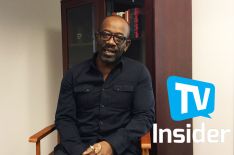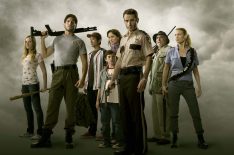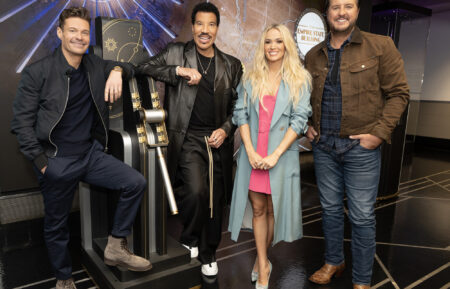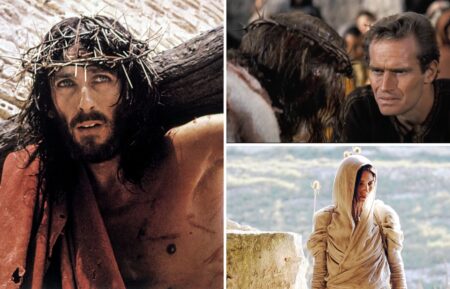What ‘Fear The Walking Dead’ Got Right — And What It Got Really, Really Wrong
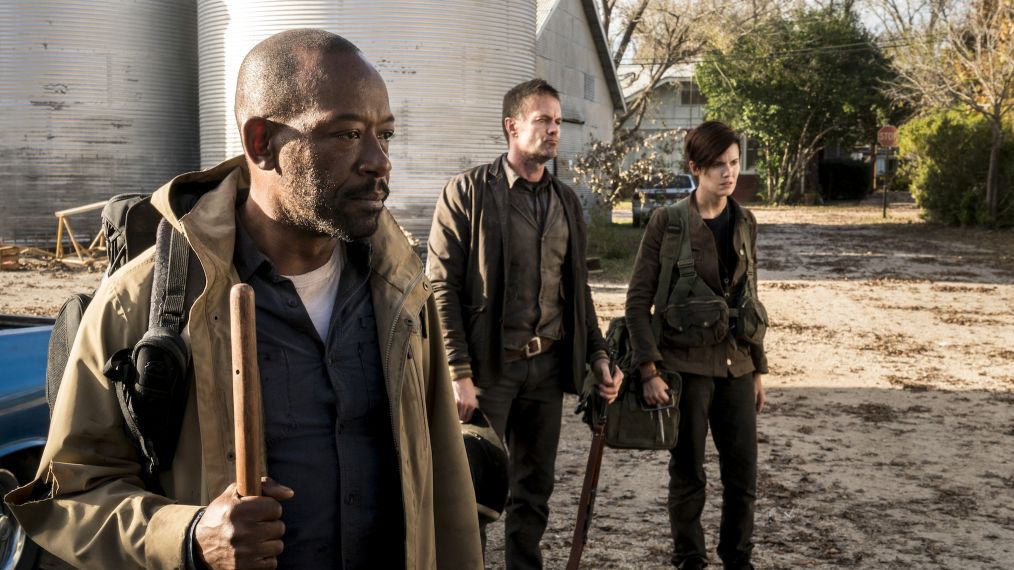
Well, this half-season of Fear The Walking Dead has certainly been… something.
For better or worse, Morgan’s addition did more than just complement the show, it ripped out all its gears and wires — the things that made it work — and replaced them with new, “upgraded” versions. But much like updating to a new software on one’s phone, Fear has been glitchy, confusing, and it crashes often.
That’s not to say nothing worked in the fourth season of AMC’s spinoff — rather, it proved to be a mixed bag of new locations juxtaposed with missing storylines, and featured an extended cliffhanger resolved in the worst way possible.
Here’s what we think Fear The Walking Dead got right in the first half of its season, and what we think it should have done better (or not done at all).
WRONG: Multiple timelines
In past seasons, Fear was a relatively straightforward show. The Clark family fought to survive in L.A., on a boat, in a hotel, on a ranch, and in a dam. These struggles were nuanced and morally tricky, but they weren’t a maze; a viewer didn’t have to grapple with navigating multiple storylines that were only loosely connected.
The choice to tell the Clark family’s story in several timelines this season to facilitate Morgan’s introduction was a bold experiment, but unfortunately, it didn’t succeed. The desaturated colors in the present day were painful to watch, and while they made it easy to keep track of where characters were in time, they were a far cry from the vibrant reds, blues, and oranges of previous seasons.
Moreover, the dueling storylines made figuring out what was happening next to impossible at times. It became difficult to tell who was alive and who had died, why certain pieces of information were being talked around instead of openly addressed, why Alicia had a grudge against Naomi/Laura/June, and why it took an entire half-season for someone to talk about Madison Clark’s death.
RIGHT: Interesting locations
For all the odd, out of character things that happened inside them, the first half of the season featured some of the most visually-striking sets Fear or its parent show have ever had. The decision to use a baseball diamond as home base for the characters was unique, and it was fun to see such a staple of American sports culture used as a survival tool, with dugouts as bedrooms and suites as kitchens.
Equally nifty was the waterpark location Alicia and Naomi explored in the fourth episode. The bright whites and blues contrasted with brown decay and rot from years of neglect, and made for a pretty cool callback to what life was like before the world ended. Things turned frightening fast when Naomi almost got bitten after slipping down a swirly slide — much worse than doing a belly flop.
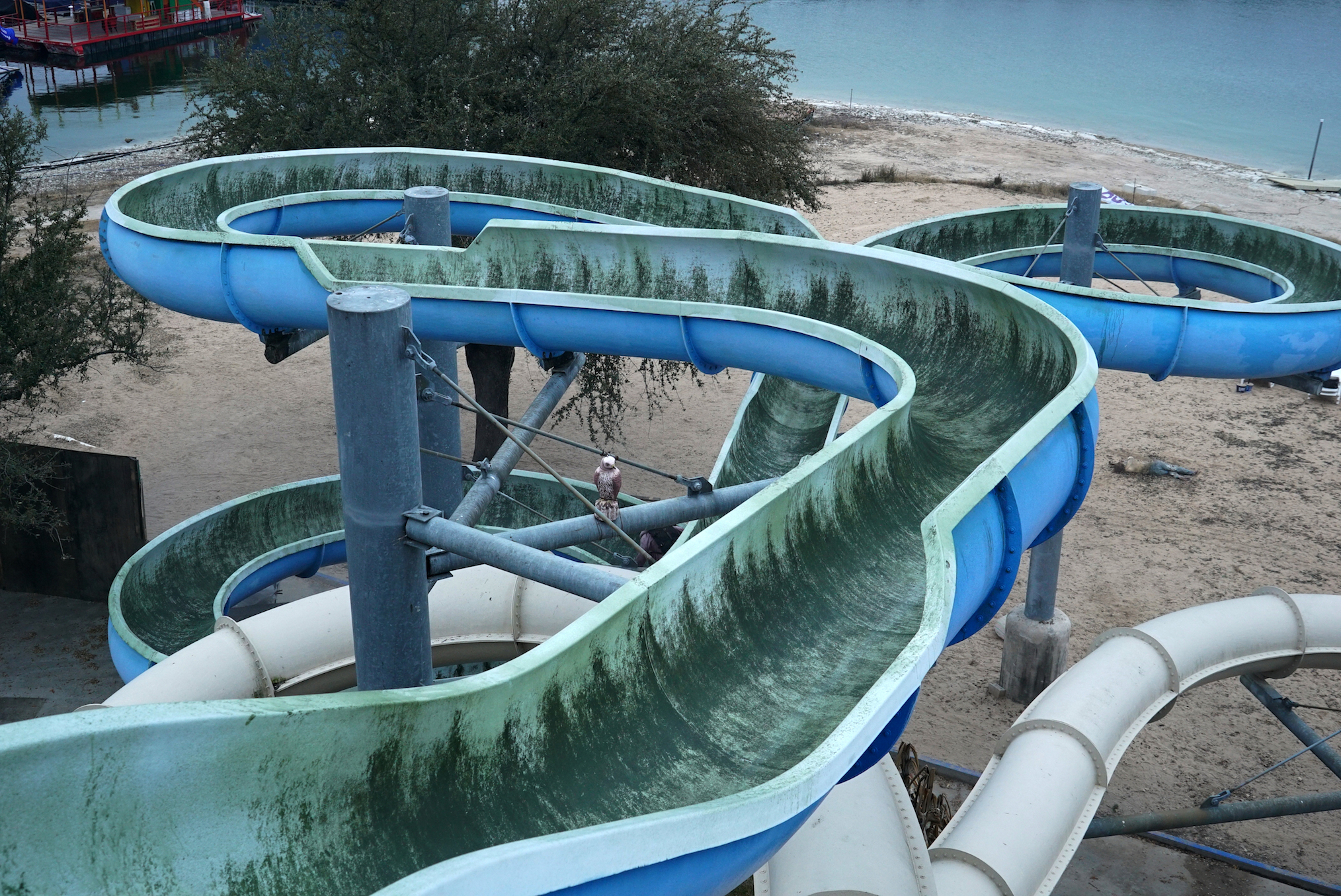
This gunk-coated slide is a lot less fun when there’s a pool of walkers waiting at the bottom. (Richard Foreman, Jr./AMC)
WRONG: Madison’s death
Easily the most infuriating plot twist of the season, revealing Madison Clark’s death in a slow-motion flashback was the worst way for her character to meet her end. The essence of it felt fitting — she died sacrificing herself to save her kids — but it was undercut by a current of lazy writing that felt disrespectful to both Kim Dickens and the character she played for three-plus seasons.
Simply put, Madison died because Nick and Alicia didn’t drive away from the horde of walkers, or make any attempt to lure the dead away from the baseball stadium. This was a solution they would have arrived at easily in earlier seasons, but for whatever strange reason, the Clark clan remained frozen in park while the dead devoured their home.
The Clark matriarch’s demise felt stilted and illogical given her past characterization. This was a woman who had led a similar swarm of walkers off a bridge. She was smart enough to survive the attack on the stadium, and there were a myriad of ways it could have been done. She could have climbed up into the stands, or she could have used her son’s method of camouflage and covered herself with walker blood to blend in with the dead.
Daniel Salazar survived this exact scenario, and for all intents and purposes, Madison could have, too. She was too sharp for the dull death she was given.
RIGHT: Nick’s final scene
Though his death felt a little rushed, Nick’s last scene on the show had an eerie quality to it. It evoked the very first frame of the series, where he lay on his back in the middle of an abandoned church, sleeping off a heroin high.
At the time of his death, the scene changed to show Nick laying on his back in the middle of a valley filled with blue flowers. His final moments proved that the oldest Clark sibling had finally found the beauty that his mom told him to look for whenever he ventured beyond the walls of the Dell Diamond.
He seemed at peace moving on from the world of the walkers and entered the great beyond with a tiny smile, as Nick Clark certainly would.
WRONG: Ignoring the dam
Season 3 ended with an exciting cliffhanger — after the dam collapsed, Madison was the only known survivor, and she was left isolated from her family and friends with their fates uncertain. Fans assumed the next season would incorporate her search for Nick, Alicia, and Strand, with hopes the show would at least feature flashbacks that explained how the tightly-knit group managed to stitch itself back together.
Instead, Fear opted to tell, not show, how Madison managed to locate the people she loved. In an extremely awkward chunk of expositional dialogue — which was jarringly out of character — Strand summarized how it was done. Apparently, Madison somehow found Alicia and Nick, Nick went out and found Luciana, and Madison nursed Strand back to health in a cave. What?
There are several logical inconsistencies with that explanation, but perhaps the biggest insult is that none of it was shown on-screen. Fans had clamored to see how everyone reunited after such a (literally) explosive finale, and instead, they were given a few sentences that did little to meet expectations or alleviate confusion.
RIGHT: John Dorie
“So, what’s your story?”
John Dorie has only been in a few episodes so far, but he’s already a well-rounded, interesting character. His gunslinging abilities come in handy, and his genuine kindness and generosity make him a rarity in a world that turns good people selfish and cruel.
It only took a few minutes in the opening episode of the season for fans to start falling in love with him, and his bottle episode really solidified that. The man still signs his movies out on a rental sheet at the department store, and returns them when he’s done. He freely offers strangers Werther’s Originals and baked beans. He’s basically the sharpshooter white knight of the zombie apocalypse.
As if he needed another trait to make him incredibly endearing, John is in love with a woman whose life he saved — and who eventually saved him in return. He manages to find her again in the middle of the season, and if the final eight episodes feature a few more chapters of their love story, it might be worth tuning in to see it.
WRONG: Inconsistent characterization
Several major characters acted and spoke differently in Fear’s fourth season than they did in the third, with little or no explanation as to how they underwent such a fundamental change in personality. Nick, for example, used to greatly enjoy walking among the dead — in Season 3’s “El Matadero,” he slipped outside the walls of the bazaar and covered himself in walker guts, just for fun. In Season 4 he is suddenly afraid of the walkers, and dislikes leaving the baseball stadium.
Alicia is also different than she was in seasons past. Her decision to keep Charlie, the girl who killed her brother, alive is probably the most glaring example. The Alicia of Season 3, who had to mercy kill dozens of people to survive, would not have allowed someone who shot Nick in cold blood remain at her side. Yet, she appears none too bothered by Charlie’s presence in “the group,” as they all sit around a campfire and eat noodles at the end of the midseason finale.
And there are other abnormalities smaller than these: Madison’s mantra, “No one’s gone until they’re gone,” doesn’t quite click with the ruthless, cunning woman she was evolving into in the show’s third season, and Luciana barely speaks at all and didn’t seem too worried about burying Nick after his death. A year changes people, but it is difficult to accept those personality shifts when they are not being shown on-screen or explained.
Fear the Walking Dead, Midseason Premiere, Sunday, August 12, 9/8c


